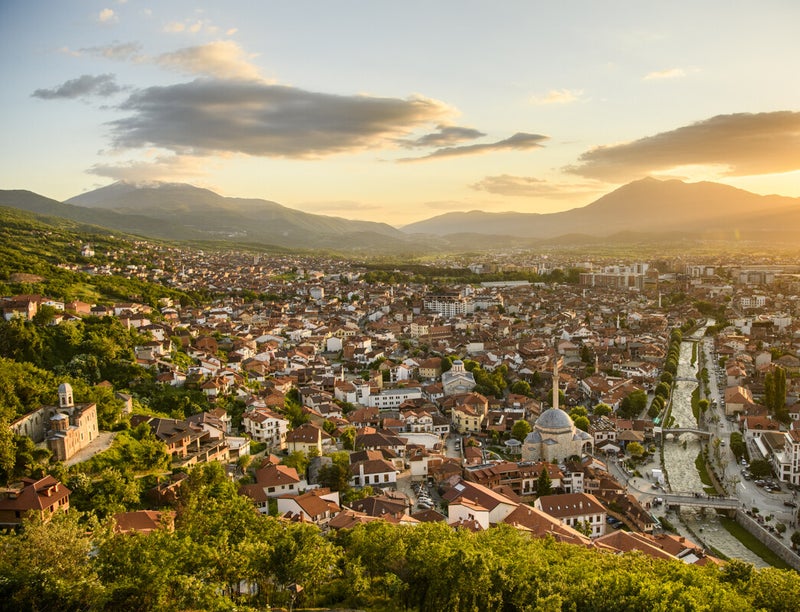With the collapse of Afghanistan in 2021, after my last mission, I began to wonder more and more if my work within the Defense Department was of any use. The decision by the United States to withdraw from the mission caused it to end sooner than planned. As a result, the Taliban rapidly threw the territory back at least 20 years. It was soon back to being an extremist, oppressive, religious country and certainly not a place I would ever want to go again.
Unlike the mission in Afghanistan, however, I have always been curious about the effects of my first mission in 1999. Somewhere in my memory, the mission in Kosovo kept popping up. Sometimes consciously, sometimes unconsciously, but over and over again I asked myself....how would it be over there now?

A few things coincided and so a few weeks later I was back in Prizren, Kosovo. This time with Max, a journalism student from Utrecht who specializes in Crossborder Journalism. Where I went to Kosovo for the first time at the age of 21, he now did the same. Full of wonder and enthusiasm he looked at this remarkable country, each time noting the stories that came to me. Sometimes through the recognition of landmarks, on the other hand through his inquisitive questions.
Although it took some searching, with the help of Google, colleagues, old photos and maps we found the same dusty red soil, grass and mountains again. Although almost everything on the surface of what was once Camp Canuba Hill had developed further, we still found small details such as the sewage system that had been built at the time. Only a few remnants of what was once the flight strip still lay there. Without the tents and vehicles of the time, most of the traces had actually disappeared, as if we had never been there.
Precisely because of this, we saw great differences between 1999 and present-day Kosovo. Thus we discovered an endless amount of gas stations, pharmacies, supermarkets, monuments, flags and symbols. We saw the pride of the Kosovar people in what they have achieved, interspersed with the dislike for the people who harmed them at the time. This resentment often manifests itself mutually in symbolism directed against the other. In any case, the pain of the past was noticeable, palpable, visible and still seeps through the different generations.
Spread over several days, we found the various locations using my old photo books and maps. We also visited the Dutch Embassy in Pristina and had an extensive conversation about the development of Kosovo and the issues that are currently going on there. We also spoke with Florin who is from Prizren and currently lives in Pristina, the capital of Kosovo. He answered all our questions regarding the culture of his country, clarified us the things we noticed and managed to put us in touch with other people in Kosovo.
Bridge near Rakovina


School in Drenoc (before named Drenovac)


Furthermore, it turned out that I was not the only veteran who wanted to return to Kosovo. So we were able to join a group of veterans who would arrive two days later. Max coordinated that we could participate in their program for one day. This gave us the opportunity to speak to several survivors of the war and learn their stories, we will come back to this at a later date.
We also went to visit one of the elementary schools where there was fighting at the time, which caused the building to be badly damaged. The help we provided to restore the building is not forgotten, we were warmly welcomed by the director. Full of pride we were given a tour through and around the school building. We visited all the classrooms, spoke with students who spoke very good English, visited the local museum and ended the visit in a local café with a glass of Raki.
Because we understood from the Dutch Embassy that they are closely involved in supporting and strengthening the various minority groups in Kosovo, including the LGBT+ community, we decided to visit this group as well. As a result, we concluded our research in Kosovo with a visit to the "Bubble Pub" in Pristina. This bar had just opened for about 1 month and is the first LGBT+ cafe in Kosovo. Perhaps we dropped in somewhat unexpectedly, because we mainly noticed how awkward the conversation was. People seemed hesitant to say anything about their LGBT+ community. In itself, in a culture dominated by Islam, this is not entirely strange. It did become clear that the various international visitors to Pristina contribute positively to the acceptance of the rainbow community. Outside of Pristina, however, this is still a major problem which will require the necessary attention in the coming years.
In summary, this trip showed us how complex and fragile the reconstruction of Kosovo is and how strong the nationalism lives there. The residents of Kosovo are working hard to rebuild their country, but the pain of the war is still often felt. At the same time, the pride and gratitude toward the international community is strongly visible in both the landscape and the hospitality.

